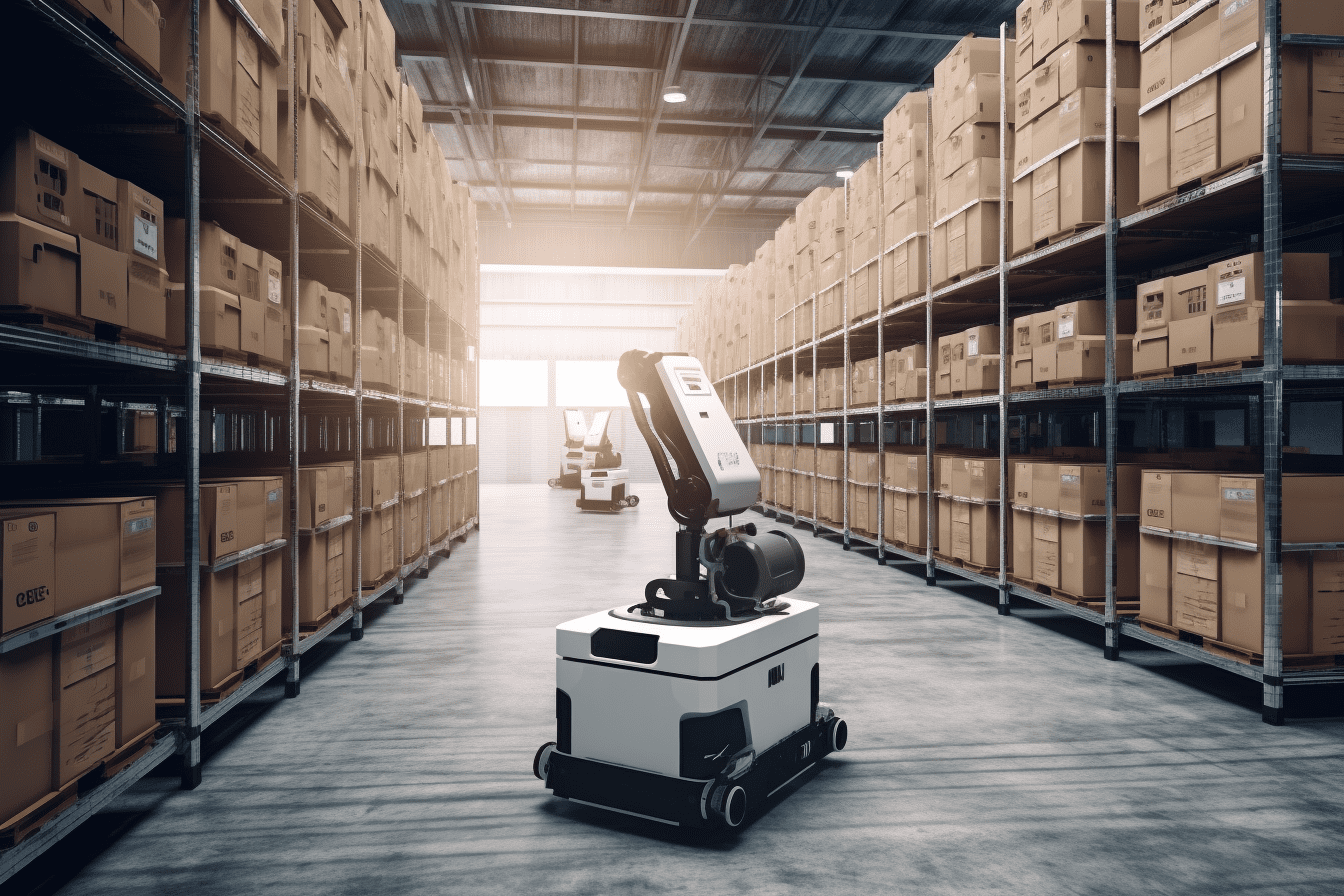IoT in Oil and Gas: Transforming the Sector with Smart Tech Solutions

The oil and gas industry is witnessing an unprecedented digital transformation, driven primarily by adopting Internet of Things (IoT) technology. This rapid advancement enables the sector to outpace other capital-intensive industries in terms of innovation and efficiency, so a potential economic impact of $930 billion is anticipated over the next decade.
According to the Voice of the Enterprise Survey conducted by 451 Research, many oil and gas companies already utilize IoT technology in the oil and gas industry. Additionally, nearly 20% of survey participants intend to integrate IoT into their processes in the upcoming period.
In this article, we explore the transformative impact of IoT applications in the oil and gas industry, showcasing how companies can leverage smart technologies to thrive and outperform in an ever-competitive landscape.
Why Does the Oil and Gas Industry Need IoT?
Undeniably, the oil and gas industry serves as a lifeline for the global economy, powering key sectors such as transportation, electricity generation, heating, and manufacturing. However, the industry has its share of challenges, including dealing with aging equipment and legacy systems, hazardous environments, stricter regulations, and geopolitical issues that hinder long-term business predictions. To overcome these challenges, businesses adopt advanced technologies, including the Internet of Things.
The IoT in the oil and gas industry is like having eyes everywhere, with physical objects fitted with sensors, software, and network connectivity. These devices communicate with each other in real-time, allowing for seamless task execution. IoT devices and sensors can be found in drilling rigs, pipelines, storage facilities, and other critical components, enabling businesses to monitor operations closely.
IoT applications in the oil and gas industry empower businesses to automate processes, increase productivity, and decrease costs by collecting and analyzing data to identify areas for improvement. With smart oil and gas IoT solutions, businesses can stay ahead of the curve by predicting equipment failures and scheduling maintenance before any issues arise, reducing downtime and keeping everyone safe and sound.

Benefits of IoT Adoption in the Oil and Gas Industry
By leveraging advanced technologies of the Internet of Things in the Oil & Gas sector, companies are unlocking unprecedented opportunities like
- Improved operational efficiency: IoT devices and sensors can monitor equipment performance and optimize processes in real time, resulting in increased productivity and reduced operational costs.
- Hazard management: IoT technologies facilitate the early detection of potential hazards, such as gas leaks or equipment failures, enabling prompt response and minimizing risks to personnel and the environment.
- Reduced maintenance costs: Predictive maintenance powered by IoT data helps identify potential issues before they escalate, preventing costly downtime and extending the lifespan of the equipment.
- Improved environmental monitoring: IoT sensors allow for continuous emissions and waste management monitoring, contributing to enhanced environmental stewardship and regulatory compliance.
- Better decision-making: The data collected by IoT devices offer valuable insights into operations, allowing for informed decision-making and strategic planning based on real-time information.
- Advanced analytics: IoT-generated data can be analyzed using advanced algorithms and machine learning techniques to identify trends, patterns, and anomalies, leading to further optimization and efficiency improvements.
- Smart inventory management: IoT-enabled inventory systems can automatically track and manage stock levels, reducing the likelihood of shortages or overstock situations and streamlining supply chain operations.
IoT Applications in Exploration and Production
The oil and gas sector has quickly recognized the transformative potential of IoT technology in exploration and production processes. Forward-thinking companies are shifting their attention from merely using IoT devices such as sensors to devising bold strategies for leveraging the data gathered from these devices. This approach enables the creation of smarter business models that propel their organizations to new levels of success.
Seismic data acquisition and analysis
Seismic data acquisition and analysis are critical processes in the oil and gas industry, providing invaluable insights into subsurface structures and the potential presence of hydrocarbon reservoirs. Here are some use of IoT in oil and gas verticals:
- Enhanced exploration efficiency: IoT-enabled sensors facilitate real-time seismic data collection, providing valuable insights into subsurface structures and accelerating the exploration process.
- Accurate reservoir modeling: Advanced analytics combined with IoT-collected data help create detailed and precise reservoir models, enabling better decision-making in the drilling and extraction processes.
Drilling optimization
Drilling represents a substantial part of oil and gas production costs, accounting for 20-30% of the overall expenses. Integrating IoT devices boosts operational effectiveness while optimizing water, chemicals, and sand use.
- Smart optimization: Research suggests that advanced analytics could reduce operation time by half. Similarly, employing semi-automated field operations minimizes employee risks and lowers onboarding expenses.
- Real-time monitoring of drilling parameters: IoT devices facilitate the tracking of drilling variables, such as pressure, temperature, and equipment performance, allowing for instant adjustments and enhanced drilling efficiency.
- Predictive maintenance of drilling equipment: Data generated by IoT enables anticipatory maintenance, detecting potential equipment problems before they worsen, minimizing downtime, and extending the life of drilling equipment.

Production monitoring and optimization
IoT is employed to improve production supervision and enhance efficiency in different sectors, particularly emphasizing its applications in the oil and gas industry by:
- Well-performance analysis: IoT sensors continuously monitor well performance, detecting anomalies and identifying opportunities for optimization, leading to increased production efficiency.
- Automated control of production processes: IoT applications can automate production process control, adjusting real-time parameters to maintain optimal conditions and maximize output.
IoT Applications in Pipeline Monitoring and Maintenance
IoT significantly enhances pipeline monitoring and maintenance processes in the oil and gas industry, ensuring safety, efficiency, and sustainability. Here are some essential oil and gas IoT use cases:
Leak detection and prevention
Leak detection and prevention are paramount concerns in the oil and gas industry, with potential consequences ranging from safety hazards to environmental damage and regulatory penalties. IoT technology has emerged as a powerful tool to address these challenges.
- Advanced sensors for real-time monitoring: IoT-enabled sensors monitor pipeline conditions continuously, allowing for real-time identification of leaks or potential weaknesses.
- Early warning systems: IoT-driven, early warning systems, provide immediate alerts for leaks or potential issues, enabling rapid response and minimizing environmental impact.

Pipeline integrity management
This is a make-or-break aspect of the oil and gas industry, as it guarantees the safe and efficient transportation of hydrocarbons over long distances. The adoption of IoT technology has opened new avenues for enhancing pipeline integrity through:
- Corrosion monitoring: IoT devices can continuously monitor pipeline corrosion rates, helping to identify areas that require attention and reduce the risk of pipeline failure.
- Predictive maintenance for pipeline infrastructure: IoT-generated data allows for predictive maintenance of pipelines, identifying potential issues before they escalate, minimizing downtime, and extending the infrastructure’s lifespan.
Energy consumption optimization
The integration of IoT technology has created new opportunities to streamline energy usage, enabling companies to monitor, analyze, and optimize their consumption patterns by:
- IoT-enabled smart pumping systems: IoT applications can optimize the operation of pumping systems, ensuring they function at peak efficiency, reducing energy consumption, and lowering operating costs.
- Integration with renewable energy sources: IoT technology can facilitate the integration of renewable energy sources, such as solar panels and wind turbines, into oil and gas operations. By monitoring and controlling these alternative energy sources, companies can optimize their energy mix, reducing reliance on traditional fossil fuels.
- Energy management through data analytics: IoT devices and advanced analytics work together to collect, analyze, and act upon energy consumption data, enabling industrial IoT oil and gas companies to optimize their energy usage, reduce waste, and minimize their environmental footprint.

IoT Applications in Refining and Processing
IoT empowers companies to manage the production process remotely, decreasing the need for physical labor. As IoT devices and sensors supply more data to the algorithm, it becomes more intelligent, facilitating increased production efficiency and minimizing the likelihood of human error.
Process Optimization and Control
Let’s look at IoT involvement in process optimization and control:
- Real-time monitoring of process variables: IoT applications in refining and processing empower operators with real-time monitoring of process variables, such as temperature, pressure, and flow rates. This continuous data stream enables them to identify discrepancies and make immediate adjustments, improving process efficiency and overall productivity.
- Advanced analytics for decision-making: IoT application platform facilitates data-driven decision-making in refining and processing operations by leveraging advanced analytics capabilities. Analyzing data collected from sensors and connected devices helps operators identify trends, uncover hidden patterns, and make informed decisions that optimize processes, reduce waste, and enhance overall performance, potentially reaching 30-50 times the initial investment within mere months.

Equipment Monitoring and Predictive Maintenance
IoT devices connected to oil and gas equipment can provide the following benefits:
- Reducing downtime and maintenance costs: IoT applications in refining and processing enable real-time equipment performance monitoring, helping detect potential issues before they escalate. By identifying the need for maintenance early on, companies can avoid costly downtime and minimize maintenance expenses.
- Extending equipment lifespan: IoT-driven predictive maintenance allows for a better understanding of equipment wear and tear, enabling operators to perform timely maintenance and optimize equipment usage. This proactive approach reduces the likelihood of equipment failure and extends the machinery’s lifespan, maximizing return on investment.
- Generating digital twins (virtual models of physical assets reflecting their processes, states, and lifecycle): When a failure arises, digital twin technology is utilized to investigate the problem, pinpoint its root cause, and develop a solution. This method boosts asset management and productivity, enabling comparative performance analysis among assets.
Safety and Environmental Monitoring
In this section, we will pinpoint how IoT enhances safety and environmental monitoring within the oil and gas industry.
- Gas leak detection: IoT applications in refining and processing can greatly enhance safety measures by continuously monitoring for gas leaks. Advanced sensors and monitoring systems can quickly identify any leaks, allowing operators to address the issue immediately and prevent potential accidents.
- Emission monitoring and control: IoT-enabled devices can help monitor emissions from refining and processing facilities, ensuring they stay within regulatory limits. By analyzing real-time data on emissions, companies can make informed decisions to adjust their processes, ultimately minimizing their environmental impact and maintaining compliance with environmental regulations.
IoT Applications in Oil and Gas Logistics and Distribution
Integrating IoT applications within the oil and gas sector has brought significant advancements in logistics and distribution processes. By implementing transparent tracking and proactive management of materials and equipment, businesses can achieve a 10% reduction in material costs.
Fleet and Asset Tracking
IoT in fleet and asset tracking employs connected devices for real-time monitoring and management of vehicles and assets.
- Real-Time location tracking: IoT in oil and gas technology provides real-time location data on vehicles, equipment, and personnel. This information allows companies to monitor their assets closely, ensuring optimal routing, reducing fuel consumption, and minimizing downtime.
- Optimizing asset utilization: IoT-enabled systems can help identify inefficiencies and underutilized resources by tracking asset usage and performance continuously. This data-driven approach enables companies to make informed decisions on asset allocation and maintenance schedules, ultimately maximizing the return on investment and reducing operational costs.
Remote Monitoring of Storage Facilities
IoT enhances remote monitoring in storage facilities by providing real-time data on crucial parameters and enabling proactive measures to mitigate risks. We will explore IoT’s influence on remote monitoring within the oil and gas sector.
- Inventory management: IoT technology has significantly improved inventory management of oil and gas storage facilities. IoT-enabled sensors and devices can monitor the levels of stored materials and automatically update inventory records, reducing the risk of stockouts or overstocking and enabling efficient inventory planning.
- Safety and security measures: IoT devices can enhance the safety and security of storage facilities by monitoring critical parameters such as temperature, pressure, and the presence of hazardous gasses. In addition, IoT-enabled surveillance systems can detect unauthorized access or potential threats, ensuring the protection of valuable assets and personnel.
Smart Metering and Billing
IoT in smart metering and billing involves using connected devices to measure utility consumption and automate billing processes accurately.
- Accurate and efficient billing systems: IoT-enabled smart meters enhance the billing process in the oil and gas industry by providing accurate, real-time data on energy consumption. This information helps companies generate accurate and timely invoices, reducing errors and disputes and improving cash flow.
- Enhanced customer service and experience: Smart metering systems can give customers detailed insights into their energy usage patterns, enabling them to make informed consumption and cost management decisions. Oil and gas companies can enhance customer satisfaction and loyalty by offering personalized energy-saving recommendations and tailored pricing plans.
Challenges in Implementing IoT for Oil and Gas Industry
There’s no doubt that IoT software plays a pivotal role in streamlining operations across a wide array of business systems – from ordering and robotics to scheduling and beyond. But there are several challenges to overcome when implementing oil and gas IoT solutions:
Data security and privacy concerns
As IoT systems collect, transmit, and store vast amounts of sensitive data, they pose significant risks to data security and privacy. Ensuring robust cybersecurity measures and addressing potential vulnerabilities in IoT networks is crucial to protect valuable information and maintaining compliance with industry regulations.
Integration with existing systems
As mentioned above, many oil and gas companies still rely on legacy systems and equipment. Integrating IoT in oil and gas solutions with these existing infrastructures can be complex and time-consuming, requiring a clear understanding of the current systems and a well-thought-out implementation plan.
High initial investment costs
Deploying IoT solutions in the oil and gas industry often require significant upfront investments for hardware, software, and infrastructure upgrades. Companies must carefully evaluate these solutions’ potential return on investment (ROI) and long-term benefits before committing to implementation.
Talent and skill gaps
Engaging top-tier IoT professionals with a broad range of expertise – encompassing IoT, security, hardware, and user requirements – can be daunting. As the IoT market continues to grow rapidly, there is an increasing demand for skilled professionals. As a result, this could cause project costs to rise and make it difficult to find professionals with the necessary skills to successfully complete a project.
Boost Your Oil and Gas Business with IoT Solutions
Embracing IoT technology can streamline gas and oil companies’ operations, enhancing efficiency and reducing costs. But, as mentioned above, hiring IoT developers may prove challenging. Luckily, Relevant is here to help.
We specialize in outsourced software development, boasting vast expertise spanning diverse sectors such as oil and gas, manufacturing, and energy. Our experts help large organizations rapidly integrate IoT and IT data to facilitate the successful adoption and scaling of IoT for digital transformation. Customized oil and gas software applications we design meet each client’s unique needs, delivering tailored, scalable systems that drive productivity and efficiency to new heights.
Just picture the impact: decision-makers, armed with real-time data analytics, possess the power to identify areas for improvement and seize growth opportunities with unmatched speed and precision. The ripple effect is profound – increased customer satisfaction, surging revenue, minimized downtime, and streamlined supply chain management, resulting in a more efficient and profitable business.
In a world where time is money, our software solutions provide the edge that every oil and gas enterprise needs to thrive. So if you’re looking for a supplier of top-quality IoT solutions or want to hire IoT developers, contact us.



